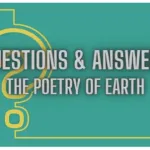PU question papers play a vital role in preparing for exams. These papers give insights into question patterns and topics, helping students prepare effectively. Below are questions and answers from all subjects, ensuring comprehensive coverage for PU students to enhance their learning and exam preparation.
English
Question: What is the theme of William Wordsworth’s poem “Daffodils”?
Answer: The theme of “Daffodils” is the beauty of nature and its ability to bring joy and solace to the human mind.
Question: What is the central idea of Shakespeare’s Sonnet 18?
Answer: The central idea of Sonnet 18 is the eternal beauty of the poet’s beloved, which will live on through the sonnet.
Question: Define the term “imagery” in literature.
Answer: Imagery refers to the use of descriptive language to create visual representations of ideas or scenes in the reader’s mind.
Question: Explain the term “dramatic irony.”
Answer: Dramatic irony occurs when the audience knows something the characters in the story do not, creating tension or humor.
Question: What is the significance of Robert Frost’s “The Road Not Taken”?
Answer: The poem symbolizes the choices people make in life and their impact on the future.
Question: What is the rhyme scheme of a Shakespearean sonnet?
Answer: The rhyme scheme is ABABCDCDEFEFGG.
Question: What is an “oxymoron”? Provide an example.
Answer: An oxymoron is a figure of speech that combines contradictory terms, such as “bittersweet.”
Question: Define “free verse” in poetry.
Answer: Free verse is poetry that does not follow a specific rhyme scheme or meter.
Question: What is the role of a protagonist in a story?
Answer: The protagonist is the main character around whom the story revolves.
Question: Explain the term “alliteration” with an example.
Answer: Alliteration is the repetition of consonant sounds at the beginning of words, such as “Peter Piper picked a peck of pickled peppers.”
Mathematics
Question: What is the formula for the area of a circle?
Answer: The area of a circle is given by A = πr², where r is the radius.
Question: Solve for x: 2x + 5 = 15.
Answer: x = 5.
Question: Define the term “prime number.”
Answer: A prime number is a natural number greater than 1 that has only two factors, 1 and itself.
Question: What is the Pythagorean theorem?
Answer: The Pythagorean theorem states that in a right triangle, the square of the hypotenuse equals the sum of the squares of the other two sides.
Question: What is the value of sin 90°?
Answer: The value of sin 90° is 1.
Question: Expand (a + b)².
Answer: (a + b)² = a² + 2ab + b².
Question: What is the derivative of x² with respect to x?
Answer: The derivative is 2x.
Question: Define “mean” in statistics.
Answer: The mean is the average of a set of numbers, calculated by dividing the sum of all values by the number of values.
Question: What is the value of log(1)?
Answer: The value of log(1) is 0.
Question: Solve for x: x² – 4 = 0.
Answer: x = ±2.
Physics
Question: State Newton’s first law of motion.
Answer: Newton’s first law states that an object will remain at rest or in uniform motion unless acted upon by an external force.
Question: What is the SI unit of force?
Answer: The SI unit of force is the newton (N).
Question: Define the term “acceleration.”
Answer: Acceleration is the rate of change of velocity with time.
Question: What is the formula for calculating kinetic energy?
Answer: Kinetic energy is given by KE = ½ mv², where m is mass and v is velocity.
Question: State Ohm’s law.
Answer: Ohm’s law states that the current through a conductor is directly proportional to the voltage across it, provided the temperature remains constant.
Question: What is the speed of light in a vacuum?
Answer: The speed of light in a vacuum is approximately 3 × 10⁸ m/s.
Question: What is the formula for work done?
Answer: Work done is given by W = F × d × cos θ, where F is force, d is displacement, and θ is the angle between them.
Question: Define “frequency” in wave motion.
Answer: Frequency is the number of oscillations or cycles per unit time.
Question: What is the unit of electric current?
Answer: The unit of electric current is the ampere (A).
Question: State the principle of conservation of energy.
Answer: Energy cannot be created or destroyed; it can only be transformed from one form to another.
Chemistry
Question: What is the atomic number of hydrogen?
Answer: The atomic number of hydrogen is 1.
Question: Define the term “mole.”
Answer: A mole is the amount of substance containing Avogadro’s number of particles, approximately 6.022 × 10²³.
Question: What is the chemical formula of water?
Answer: The chemical formula of water is H₂O.
Question: State the law of conservation of mass.
Answer: The law states that mass is neither created nor destroyed in a chemical reaction.
Question: What is the pH value of a neutral solution?
Answer: The pH value of a neutral solution is 7.
Question: What is the common name of NaCl?
Answer: The common name of NaCl is table salt.
Question: Define “electrolysis.”
Answer: Electrolysis is the process of decomposing a compound using an electric current.
Question: What is the valency of oxygen?
Answer: The valency of oxygen is 2.
Question: Name the process by which plants make food.
Answer: The process is called photosynthesis.
Question: What is an acid?
Answer: An acid is a substance that releases hydrogen ions (H⁺) in solution.
PU question papers provide essential guidance for exam preparation. With a variety of questions and answers across all subjects, students can thoroughly prepare and build confidence to excel in their exams.
Latest Posts
- Step-by-step guide to download and apply for jee mains admit card 202
- Comprehensive 2025 government holidays and recruitment details for job seekers
- JEE Mains Admit Card 2025: Your Step-by-Step Guide to Downloading the Hall Ticket
- Everything You Need to Know About 2025 Government Holidays Recruitment
- Comprehensive Guide to rrb d group recruitment 2025 – Eligibility, Vacancies, and Application
- Detailed guide to nps trust recruitment 2025 vacancies, eligibility and apply process
- Comprehensive guide to hpcl recruitment 2025 notification, vacancies, and application process
- ignou bed admission 2025 complete recruitment guide with eligibility and process
- Comprehensive Guide to Indian Army Agniveer Recruitment 2025 Notification and Jobs
- Everything You Must Know About CBSE Board Exams 2025 Changes & New Rules





